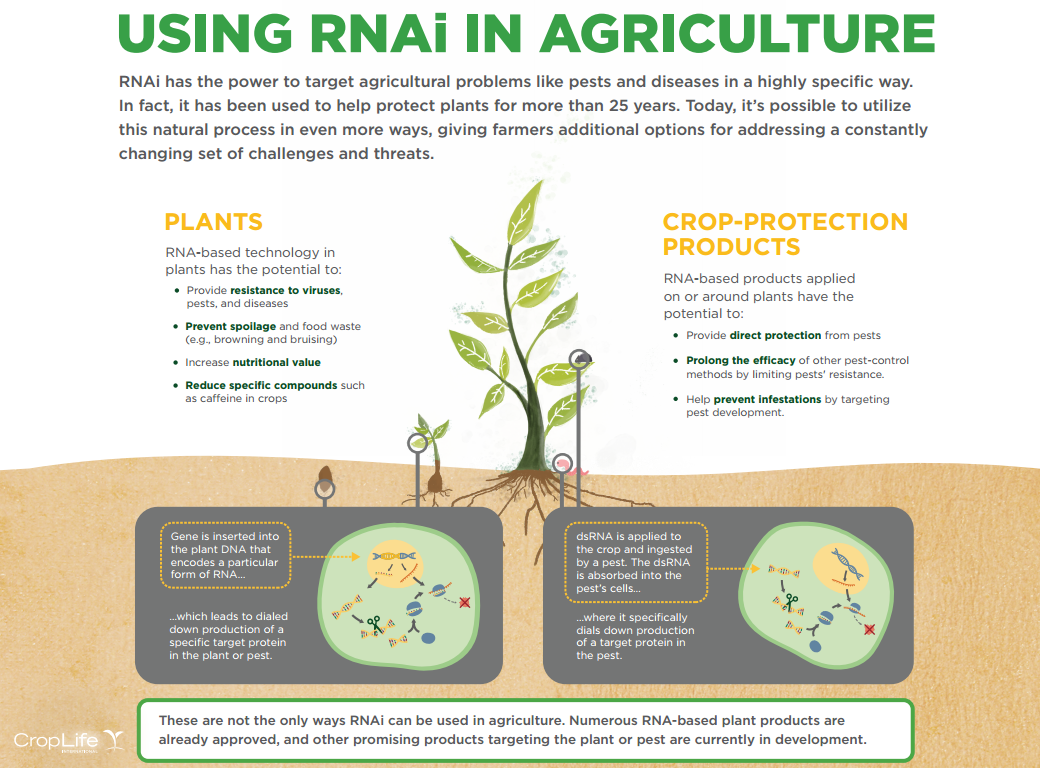RNAi is Code for Crop Improvement
Plant scientists are saving food crops from near extinction by using a naturally occurring process called RNA Interference (RNAi) to combat pests and diseases, improve nutritional value, and reduce food waste. For example, RNAi was used to develop ringspot virus-resistant papayas, which saved Hawaii’s papaya industry. Orange trees that resist citrus greening, a devastating citrus disease, and maize resistant to corn rootworm are RNA-based products in the pipeline.
RNAi occurs in the cells of living things in which RNA molecules inhibit gene expression, thereby preventing protein production. Proteins are the building blocks of tissues and they carry out many essential biological functions. In some cases, decreasing the production of specific proteins can be beneficial. RNAi works like a “dimmer switch” to dial down the level of a protein, which can be used to modify food crops in useful ways. For example, RNAi can reduce the production of proteins responsible for the development of a disease or essential for a pest’s survival, thus protecting plants.
RNA-based technologies can also benefit crops in other ways – from the reduction of undesirable traits, to improved quality and nutrition. Already commercialized RNA-based products include non-browning apples, nicotine-free tobacco, decaffeinated coffee, and soybeans with less saturated fat. Research using RNAi methods include crops with lower levels of natural toxins, such as gossypol in cotton seeds and linamarin in cassava plants, as well as nutrient-fortified and hypo-allergenic crops.
RNA-based technologies can improve crop performance by increasing stress tolerance, inducing early flowering or delaying ripening or deterioration. These attributes help farmers increase yields or harvest crops at optimal times.
They may also be used to develop crop protection products that only affect targeted pests. For example, an insecticide could only impact corn rootworm in maize but not other insects, animals or workers. The possibilities are endless with RNAi for improving plant genetics!
This article and the image included was published and created by CropLife International. See original post here.

